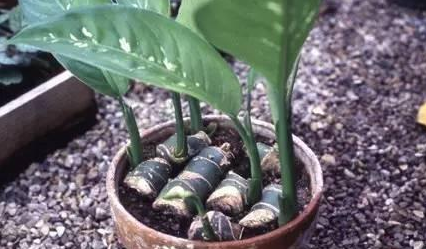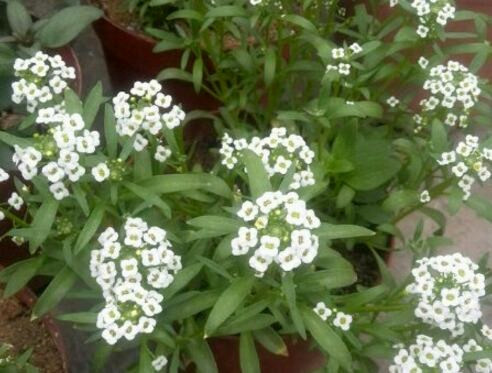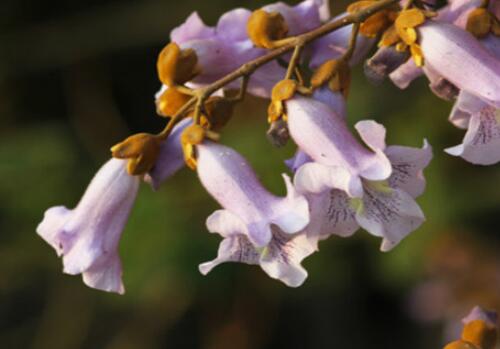How do evergreens reproduce?
How do evergreens reproduce? The propagation of evergreen is relatively simple, which can be propagated by sowing method, plant division method and cutting propagation method, but the non-excessive plant method is relatively common.

1. Ramet propagation
Although evergreen can be propagated by sowing, it is generally propagated by the method of dividing plants because of the limitation of seeds. The ramet propagation of evergreen can be carried out in spring and autumn, but it is generally combined with changing pots in spring.
The ramet of evergreen mainly says that the tufted plants are divided into transfusions with roots, and then they are planted separately. The specific method can be to cut open the joint of the clump with a sharp knife, paying attention to at least 4 new buds in each clump. After the wound is dried, plant it separately, put it in the shade, and pour water through it 1-2 days later. Generally speaking, it can be divided into plants every 3 years.
Can be combined with the annual spring basin change, ramet when the plant is knocked out of the basin, and cut from the base, divided into several parts. The incision must be smooth, coated with plant ash or charcoal powder, and then put on the basin. Water thoroughly for the first time after ramet, and put it in a cool place. Always keep it moist, but not too wet. The transplanted plants, only need to be carefully managed, can grow into flowering plants that year.
2. Cutting propagation of evergreen.
It can be divided into softwood cuttage and old wood cuttage.
The softwood cuttings are carried out during the rainy season from June to July, and the old wood cuttings can be carried out from March to April next year.
Softwood cuttings should be cut with sturdy cuttings of the same year, a section of 15 cm from the top to the bottom, a section of 0.5 cm below the node, and a cut at 0.5 cm below the node. The incision should be smooth, keep the parietal lobe, and remove the lower lobe. Those with greenhouse conditions can be cut in the cutter, and family flowers can be cut in the pot. The medium can be mixed with vermiculite and perlite (1:1), or mixed with garden soil plus bran ash and appropriate amount of fine river sand.
The cutting depth is generally about 1 stroke 3 of the length of the cutting. Press the base slightly with your fingers so that the base of the cuttings is in close contact with the medium. After cutting, spray enough water with a fine spray can, and then put it in a cool place. After that, you need to keep it moist, with a relative humidity of about 80%. At 20-25 ℃, roots can take root one after another after 20-30 days.
Old wood cuttings can be carried out between March and April, and can be cut into sturdy branches every other year, cut into a section about 15 cm long, the lower cut should be cut at 0.5 cm below the node, the stem section with top leaves and the following stem segments can be used as cuttings, the leaves should be removed in the lower part of cuttings, the cutting method should be the same as tender wood cuttings, after watering enough water, put in a cool place, and often keep moist, 1 month or so can take root one after another.
Can also cut 15 cm of the apex stem, the top leaves 3 to 5, directly inserted into the water, 2 days after a change of water, can also take root from the node. When cutting cuttings, do not let the juice fall into the eyes or in the wrong entrance, so as to avoid poisoning and injury. Water insertion is also easy to take root.
3. Sowing and reproduction
Red berries can be produced after ten thousand years of blue and white flowers, and the berries can be sown and propagated after they are ripe and harvested. Sowing and reproduction are usually carried out between March and April. After sowing, pay attention to control the temperature, light and soil humidity, wait for the seedlings to grow to 3-4 leaves can be planted in pots. If the temperature is controlled at 20-30 ℃, the evergreen seeds can germinate in about a month. In addition, after watering the evergreen, put it in the shade temporarily.
Time: 2019-03-19 Click:
- Prev

How much is the price of fragrant snowball seeds per jin? When is the sowing season? How to plant it? What are the main values?
Fragrant snowball is also known as courtyard mustard, small white flower, jade butterfly ball and so on. Distributed along the coast of the Mediterranean. China's Hebei, Shanxi, Jiangsu, Zhejiang, Shaanxi, * * and other provincial parks and flower beds are cultivated for viewing. So, how much is the price of fragrant snowball seeds per jin? When is the sowing season? How to plant it? What are the main values?
- Next

What is the purchase price of deciduous trees paulownia trees? How much is a sapling? When will the flowers bloom and the leaves fall? What?
Paulownia trees, also known as paulownia, light paulownia, Lankao paulownia, catalpa leaf paulownia, white paulownia, Taiwan paulownia, cultivated or wild, are being introduced in some areas. What is the purchase price for paulownia trees? How much is a sapling? When will the flowers bloom and the leaves fall? How do you plant it? Learn from Changsha building materials market
Related
- Fuxing push coffee new agricultural production and marketing class: lack of small-scale processing plants
- Jujube rice field leisure farm deep ploughing Yilan for five years to create a space for organic food and play
- Nongyu Farm-A trial of organic papaya for brave women with advanced technology
- Four points for attention in the prevention and control of diseases and insect pests of edible fungi
- How to add nutrient solution to Edible Fungi
- Is there any good way to control edible fungus mites?
- Open Inoculation Technology of Edible Fungi
- Is there any clever way to use fertilizer for edible fungus in winter?
- What agents are used to kill the pathogens of edible fungi in the mushroom shed?
- Rapid drying of Edible Fungi

